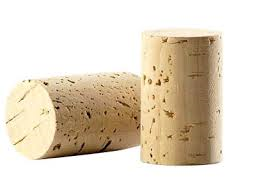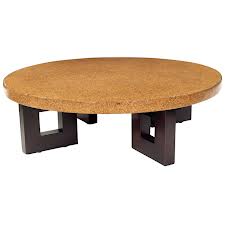At a time when trees are getting cut down and harvested at an alarming rate, efforts are being made to stop their felling by providing eco-friendly sustainable alternatives. Forests are being cleared to provide us with wood, causing loss of habitat and natural vegetation in many places. Keeping that in mind, it is high time we start replacing wood with safer, cheaper and eco-friendly alternatives.
While some believe bamboo to be the best alternative for wood, there are other alternatives that tend to get overlooked. Cork is one such find. Cork is not as popular as bamboo, but it is gradually gaining recognition among masses, especially among those who believe in green ways of living.
Where is cork obtained from?
Cork is obtained from the bark of evergreen oak trees which grow in northwest Africa and the south western side of Europe in countries like Tunisia, Portugal, Italy, France, Portugal and Algeria. Portugal accounts for maximum cork production in the world.
How is cork obtained?
The cork oak tree is an evergreen tree that does not shed its leaves. It has two layers of bark- the outer and inner bark. The dark brown outer bark is peeled off from the tree to produce the cork. When the tree reaches a mature age of twenty five, the outer bark is carefully peeled off with a hatched in such a way so as to not harm the tree in any way. The inner bark remains intact. The tree is able to regenerate its outer bark in a few years. An average cork oak tree can live up to two hundred years, giving ample opportunities for the extraction of cork. The bark can be stripped from the tree once in every nine to twelve years.
Why is cork extraction sustainable?
Cork extraction is sustainable because the tree does not have to be cut down to obtain it. It is a safe alternative to lumbering where the trees have to be cut down.
What is cork used for?
Cork was once used for making bulletin boards and bottle stoppers. But nowadays, aside from these traditional uses, cork is used as an eco-friendly alternative to wood in making furniture and floors. Cork boards, furniture and floors are being manufactured by companies keeping in mind the eco-conscious consumers who are looking for greener alternatives to wood. Furthermore, it is often used as an underlayment to wood or ceramic. It is still a fairly new phenomenon that may take a few years to catch on. But because of its high durability, many people are opting for cork rather than spending money on wood. If properly maintained, cork floors or furniture can last many years.
What is the price of cork?
The standard price of cork ranges from $3- $8 per square foot. It may vary according to the country.
What are the advantages of cork flooring and furniture?
Using cork furniture or flooring has a number of advantages. They are as follows-
- Most importantly, cork furniture is saving the environment by preventing the cutting of trees.
- Cork has natural cushioning and insulating property which is great for floors. It reduces noise to a great extent.
- The insulating quality is also great for lessening heating costs.
- Cork is easily available anywhere.
- Because of its spring like nature, it has an inbuilt resistance to minor indentations.
- The naturally occurring suberin in cork has an anti-mould property protecting the flooring or furniture from rots.
- Cork is resistant to fire. This is definitely an advantage in homes.
- Cork doesn’t release any harmful chemicals in the air during combustion. It is extremely safe for households, especially if you have children.
- It is easy to install.
What are the disadvantages of cork flooring and furniture?
While cork may seem as good as using wood, there are some minor issues that need to be tackled. Compared to the advantages, the disadvantages may not be that significant. Nevertheless we need to look at them too. Here are a few disadvantages of using cork-
- It is prone to scratches because of its fairly soft texture. Using very sharp objects in close proximity to cork furniture should be avoided. Also, it should be varnished to protect it from punctures and scratches.
- It has a tendency of fading due to sunlight.
- It has very limited colour choices.
- It is a bit more costly than some other flooring or furniture materials.
- It does stain easily when oil or any other form of liquid is spilled. The solution is to clean the spilled liquid as soon as possible.
- To keep it waterproof, sealing it every five years is a must.
Since we are buying cork flooring or furniture to protect and save our environment, the question of transportation should also be taken into consideration. Always buy cork from local manufacturers or sellers in your locality to reduce carbon emission. Otherwise the fuel burned during shipping or transportation would repeal your good deed totally.




Leave a Reply